
By Pooya Stone
Today, almost all countries across the globe have managed to overcome their inflation rate issues. In this respect, in 2018, the average global inflation rate was 2.4 percent; however, Iran had been ranked fourth in the world.
In its latest report, Iran’s Parliamentary Research Center declared: “From 2012 to 2009, the average economic growth of the country was nearly zero percent while the state determined to increase the rate by eight percent according to the purpose of fifth and sixth development plans.”
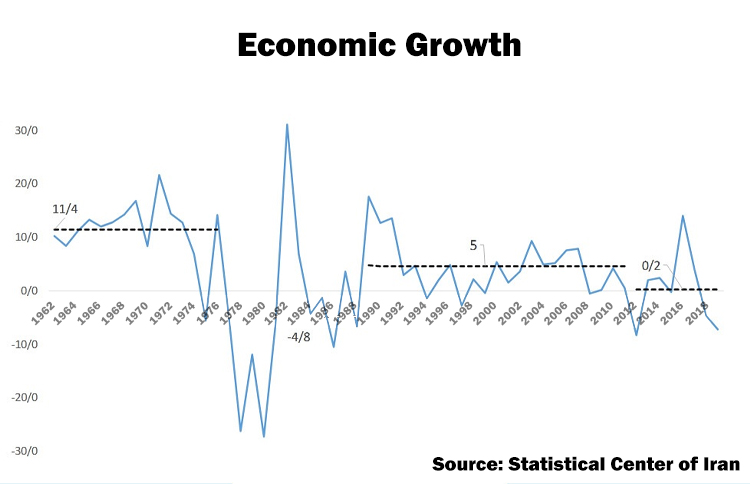
Notably, the country’s economic growth had fluctuated in recent years. However, fluctuating was more significant rather than negative growth. In this context, stats show that Iran’s economic growth has been fluctuating between negative 8.3 to positive 14 percent.
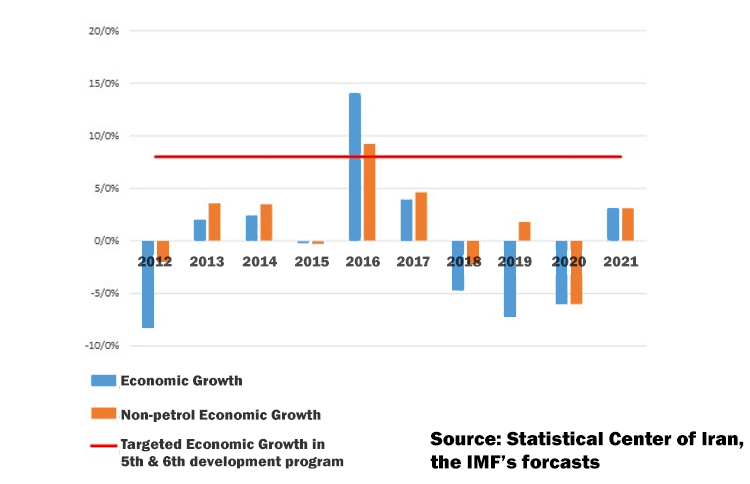
The Capital Formation
The fixed capital formation has always had a downward trend since 2011, such as investment in machinery and construction sectors. This issue is particularly alarming in terms of the potential for economic growth in the coming years.

Since 2011, capital accumulation has had a negative outcome in the petrol and gas, industry, mines, construction, and communication sectors. For instance, until 2017, around 2.2 percent of the capital accumulation in these sectors had annually been reduced. This reduction took place while the annual growth of the mentioned sectors was averagely 5.3 percent per year within seven years prior to 2011.
Inflation Rate in Iran
The average long-term inflation rate in Iran’s economy has been close to 20 percent. In terms of the inflation rate, Iran has been ranked fourth after Venezuela, Zimbabwe, and Argentina, while almost all other governments managed to overcome the problem of inflation in their territories.
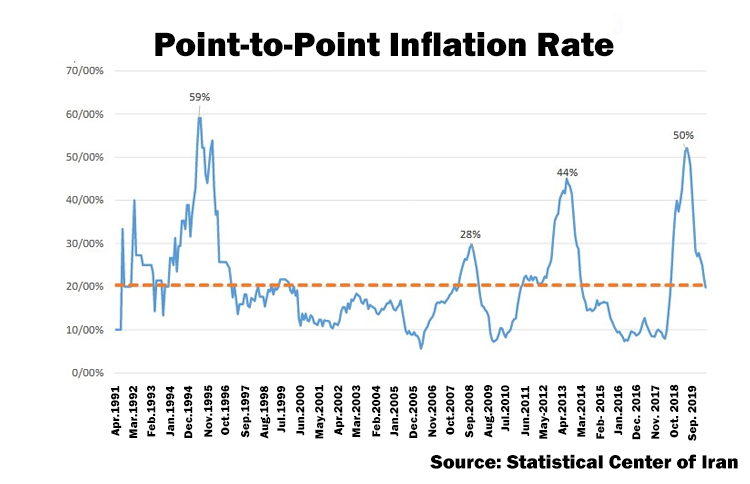
New Employees
From 2015 to 2019, around three million people have been added to the country’s employed population. Non-corporate sectors regularly recruited from the young workforce in non-producing careers such as retail, material sale, maintenance, transportation, brokers, foodstuffs services, and etc.
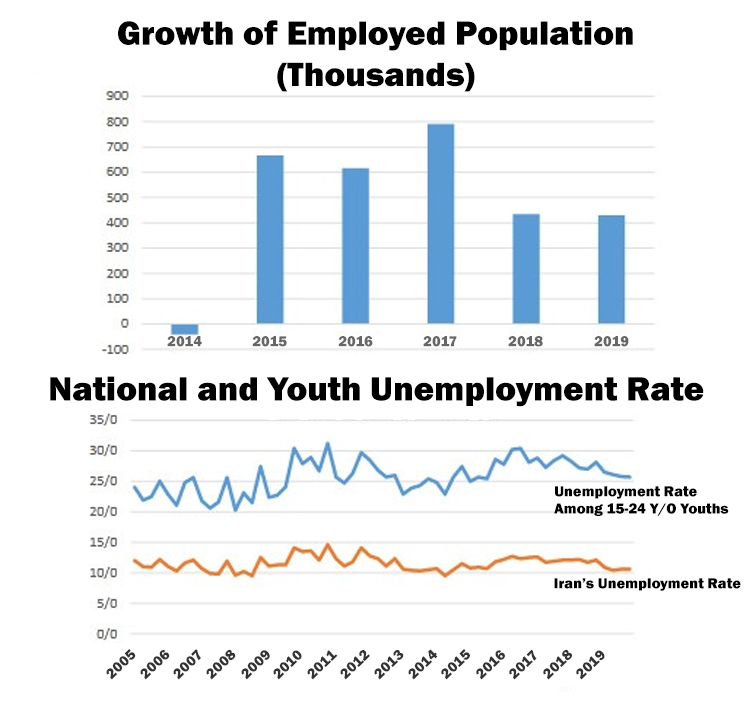
Notably, given there is no contract between employees and employers, these jobs are approximately not covered by any insurance.
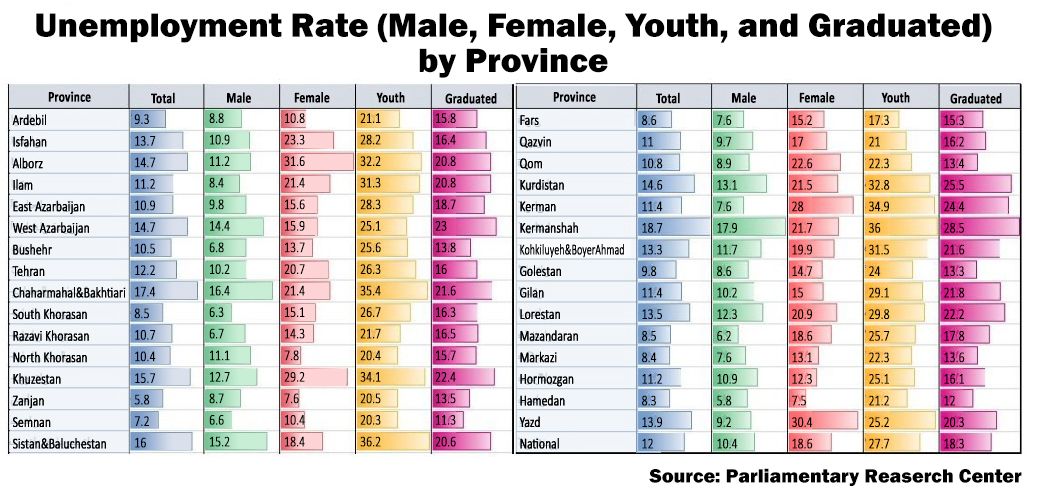
According to the Statistical Center of Iran, in early 2020, about 2.44 million workers have had incomplete employment status. Over the past three decades, the rate of incomplete employment has stood at ten percent.
The Per Capita Income
Iran’s per capita income has decreased by 34 percent between 2011 to 2019, according to the regime’s Statistical Center.
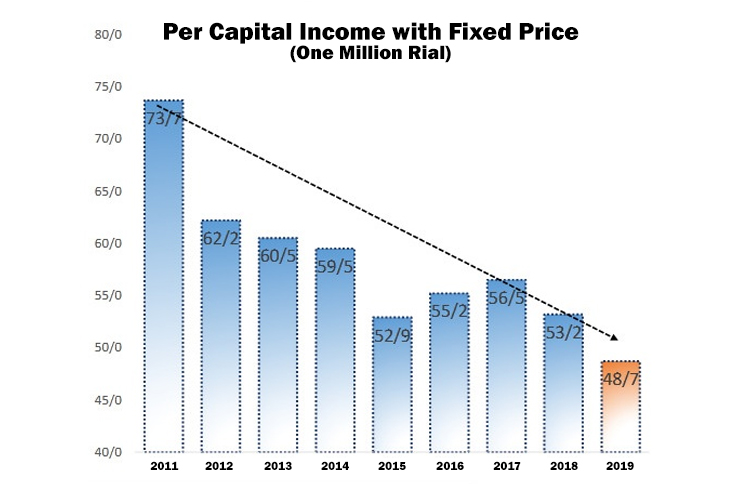
In fact, the people’s purchasing power has reduced about one-third in comparison to 2011 despite the increase in nominal incomes of Iranian families. On the other hand, it will take at least six years to return to the per capita income level of 2011 if the eight-percent economic growth is realized from 2020 onwards.
Also, the growing rate of the Gini coefficient and the ratio of the society’s richest to poorest decile displays a significant increase in inequality and the social gap from 2013 up to now. This is considered the aftermath of negative economic growth and high inflation over the mentioned period.
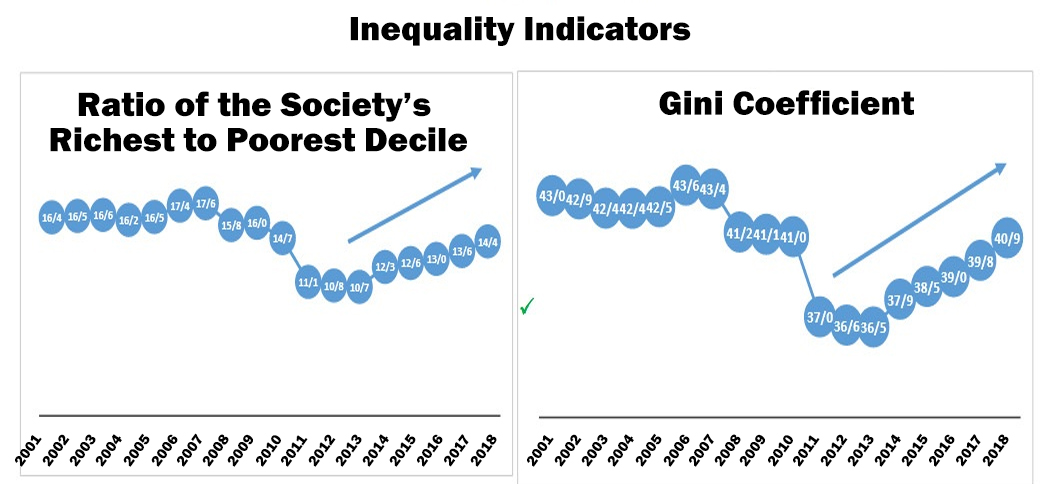
Changes in Expenditures of Iranian Families’ Product Basket
In recent years, given the main share of food in the poor families’ product basket, the growing inflation rate for food and beverages indicates a worsening livelihood for low-income segments of Iran’s society in comparison with other segments.
Read More:
Iran claims It Will Reduce Inflation While 45 Million Have Inadequate Income
Therefore, stats reveal that the rest of Iran’s population has been pushed to more difficulties in parallel to the upward movement of the poverty line. In this respect, more than 60 million people live under the poverty line that is synonymous with about 80 percent of the total population, according to official statistics.
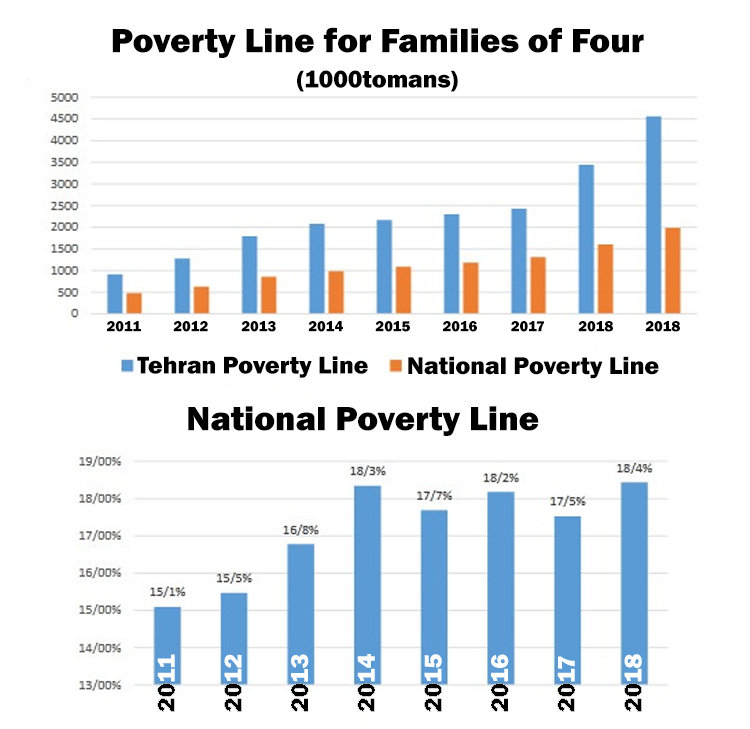
Absolute Poverty
Absolute poverty is the inability to meet minimum living standards. Of course, due to the difference in living costs in different regions of the country, the absolute poverty line is different. However, breadwinners, in any case, have been unable to provide essential supplies in the absolute poverty state.
Also, in 2018, poverty fluctuated between five to 23 percent in different Iranian provinces. Indicators show that eastern provinces experienced higher poverty rates.

In recent years, inflation has led to significant growth in the poverty line in the Iranian capital Tehran and other parts of the country. This, along with a significant reduction in per capita income, has led the country to an increase in poverty over these years. Evidence shows this rate will grow in 2020, according to the country’s Statistical Center.
Read More:
Iran claims It Will Reduce Inflation While 45 Million Have Inadequate Income


